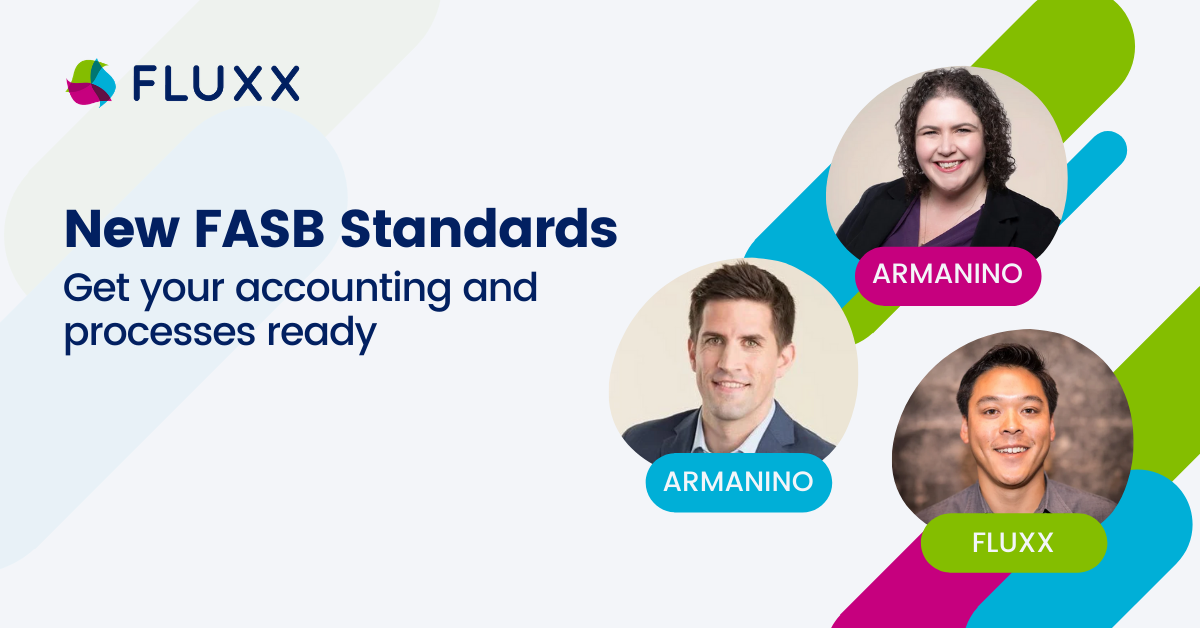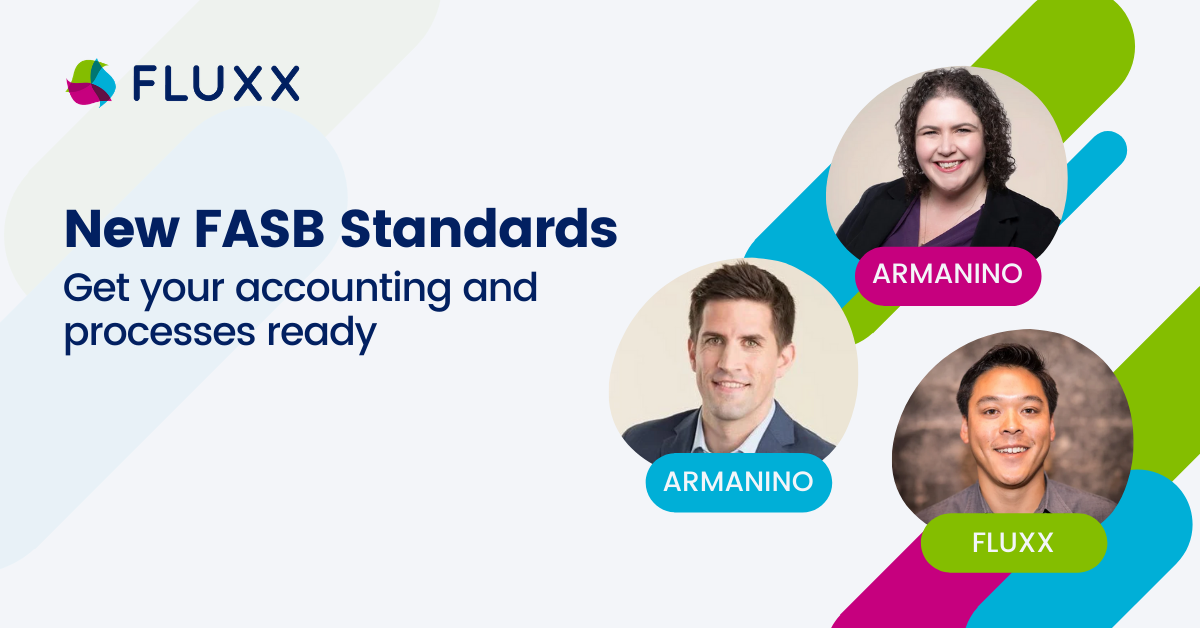
Consider this your friendly reminder – the new FASB accounting standards go into effect this December 15th! If that sentence gave you a wave of anxiety, don’t worry, we’ve got you covered. Earlier this year we released a webinar about what the new standards mean for foundations and their grantees, along with a few examples of how you might interpret and implement the changes in your grants management system.
And in July we took things a step further. With our partner accounting firm Armanino, we shared examples of what our clients have done to define their policies to address these new standards, and outlined a step-by-step process that any funder should use as they work to implement these changes. Check it out here.
The following steps will ensure that you and your team are able to successfully implement these new accounting standards in a way that serves both your organization and grantees.
Understanding the New Standards
These new standards were issued in order further define which grants and contracts should follow contribution accounting rules.
Essentially, funders are now being asked to define their grants according to conditional or unconditional grants. A conditional grant would be a grant that contains both a “barrier” (as in specific requirements that the grantee must complete in order to keep their funds) and a “right of return” (as in the funder can request a return of funds). And of course, unconditional grants would be funds that only depend on the passage of time (one year grant for examples) or a promise that the funds will be used for a particular mission.
To review an in-depth definition of these regulations, watch our webinar.
The Following Steps Will Help you Implement your Changes
Step 1: Open lines of communication between Finance, Accounting, and Grants Teams.
Make no mistake, the FASB standards will require an organization-wide change. Every team has a role to play including program executives, grants administrators, legal, finance and accounting. For example, program staff will need visibility into which grants are affected by the new standard, and grants administrators need to understand how to successfully track grants according to the new standards and modify the review process if any grants require additional steps.
Start by setting a meeting between your Finance, Grants, and Accounting teams so each group can define and understand the new standards (that means being able to clearly identify conditional or unconditional grants, along with grant barriers and restrictions), and define what each teams role will be for the implementation process.
Step 2: Review your standard grant agreement language to determine if it contains a barrier and a right of return.
Now that your organization understands these standards, it’s time to sit down and review your grant agreement language.
As you determine your conditional grants, pause to consider the following questions as a team:
- Does my organization require several conditions for our grants?
- Do these conditions directly support my mission as a funder?
- Do the conditions we have drive more impact?
- What objectives should our grantees define to set themselves up for success?
Consider these FASB standards to be an opportunity to assess your grantmaking. Take the time to think big and consider how your imposed conditions affect your grantees, and whether or not they are truly supporting your mission.
To make it easier to determine your specific barriers and right of returns, keep the following best practices in mind:
- An agreement does not need to include the specific phrase right of return or release from obligation
- In the absence of clear language, the agreement shall not be considered to contain a right of return and shall be deemed unconditional
- A probability assessment about whether the recipient is likely to meet the stipulation is not a factor when determining whether an agreement contains a barrier
Step 3: Ensure there is a process in place for Finance to review non-standard grant agreements.
Now that your team has determined how your grant agreement language will be affected by the new FASB standards, Finance will need to implement a process to review non-standard grant agreements. This process should be communicated to other teams so everyone understands what’s expected of them. For example, if your Finance Team has specific reporting requirements, whoever is in charge of generating reports will need to know how they should be prepared.
Step 4: Work with Finance and Grants Programming to determine where / how barriers and right of returns should be tracked and marked in the grant cycle.
Here’s where your grants management system (GMS) comes into play. Ideally, your GMS should be highly-configurable – meaning your grants administration team should be able to make any necessary changes directly in your system. For several real-life examples of how teams have made adjustments to their grants management system, watch our webinar.
We’ve seen funders note conditions in their grant agreement language, add conditional “yes/no” fields onto their grants in order to clarify their reports for the finance team, or add text fields to payments where the condition can be recorded. Regardless of how to you choose to implement your changes it’s important that your team asks themselves the following questions:
- How much time does my team spend managing conditional grants?
- How should my IT systems help collect, manage and share data on conditional grants?
If your organization realizes that an inordinate amount of time will need to be spent tracking and managing conditional grants, take a moment to once again assess whether each condition is necessary to your work, leads to greater impact, and truly supports your grantees.
Step 5: Identify and track the Direct Charitable Activities (DCA) codes for the various program gift areas you are tracking.
As a funder, you likely have a specific mission and therefore only give within a few programmatic areas of focus. But, if you are one of those funders that gives more broadly, being able to track your DCA giving codes will make your finance team’s job a lot easier because they will have all of that information readily available and in their chosen system. So, make sure you are supporting your finance team and tracking these codes!
With mere months left before the new FASB accounting standards go into effect, it’s time to start the implementation process now. Meet with your teams, define your process, and make sure that each member of your organization understands their role in implementing and tracking any changes. To see in-depth examples of implementation techniques, along with case study examples that will help you understand conditional and unconditional grants, barriers, and more, watch our webinar.
Fluxx would like to thank our accounting partner, Armanino, for joining our webinar and working so diligently to help you, our readers and viewers, understand and interpret the new FASB standards.

